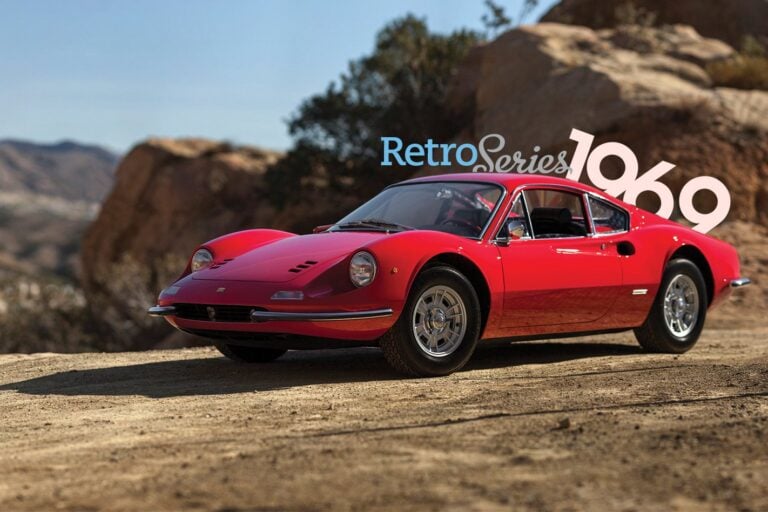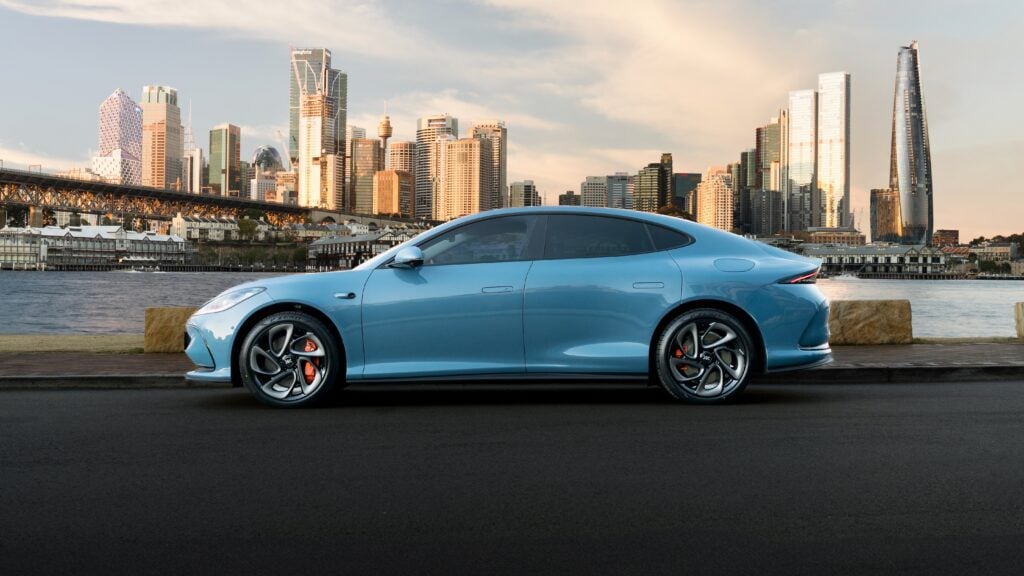Discerning a dolphin from a porpoise, a crocodile from an alligator, a white rhino from a black rhino and an Aston Martin DB6 from a DB5 have been lifelong conundrums, at least until I looked them all up.
The visual differences between the James Bond-blessed DB5 (1963-’65) and its successor DB6 (1965-’70) all describe the evolved purpose of the latter: a more accommodating 2+2-seater with enhanced stability for high-speed grand touring.
Look, then, for the DB6’s more upright windscreen and front quarter-windows, a taller rear roofline that extends father back along the rear quarter-panel, and its Kamm ducktail rear end, versus the DB5’s more traditional tail fins.

Two-piece bumpers are another DB6 tell-tale, while subtle wheelarch flares indicate a DB6 Mk2, introduced in 1969.
The DB6 would be a stopgap between the traditional (and heavily DB4-based) DB5 and Aston’s new-generation, V8-powered DBS, which was eventually launched – still with straight-six power – in September 1967, with the V8 engine arriving two years later.
The DB6 was much more than a stretched and facelifted DB5. Built on a 95mm longer wheelbase, the DB6 abandoned the DB4/DB5’s pressed steel platform capped with superleggera ‘greenhouse’ frame clad in aluminium panels, for a more conventional steel monocoque chassis with aluminium body.

The flared, abrupt Kamm tail came from Aston’s experience with rear-end lift on its 1962 DP 212 Le Mans racer, addressed in the following year’s DP 214 and similarly adapted to the DB6 to improve high-speed handling.
One prototype DB6 was built with a de Dion tube rear suspension, but this was saved for the DBS, so the DB6 basically carried over the DB5’s coil-sprung front wishbones and live rear axle. The same was true of the 4.0-litre inline six-cylinder engine, offered in the DB6 with the choice of a ZF five-speed manual or an unloved, three-speed Borg-Warner automatic.
At £5000, the DB6 cost 10 percent more than the average UK home in 1965. Yet a DB6 also spawned the legend of a customer urging Aston’s owner David Brown to sell him a car “at cost” – and Brown obliging with an invoice for £1000 over list…
The DB6 was destined to remain in the shadow of its movie-star sister, but its greater comfort and higher production run (1788 units, 729 more than DB5) make it a practical and relatively affordable classic, while still a rare sighting in the wild.

The upside of up
The DB6’s inverted three-spoke steering wheel is a signature item, almost as much as the cluttered instrument binnacle that mimics Aston’s distinctive grille shape.
The front buckets still sit very low to the floor and contribute to 25mm greater headroom than the DB5; the raised rear roofline and greater footroom makes the rear cabin a habitable 2+2.

A handy vantage point
The DB6’s 3995cc, all-alloy dohc inline six was fitted with triple SU carbs and quoted the same 210kW at 5500rpm as the DB5, but with a slight torque increase to 400Nm at a higher 4500rpm.
The Vantage engine option, with a higher compression ratio and triple Weber 45 DCOE carbs, raised power usefully to 242kW at 5500rpm.
| In detail | |
|---|---|
| 447 | Vantage spec produced |
| 1788 | DB6 total production (vs 1059 DB5) |
| 240 | km/h top speed |
| 1969 | MkII launched with flared arches |
| 5000 | Price new in GBP |
We recommend
-
 Features
FeaturesRetro: 1965 Shelby GT350
Asked to add street cred, Carroll Shelby turned the pretty Ford Mustang into a racing thoroughbred
-
 Classic Wheels
Classic WheelsRetro: 1969 Ferrari Dino
Enzo's first-born was the inspiration behind Ferrari's agile, mid-engined gem
-
 Classic Wheels
Classic WheelsRetro: 1963 Renault Alpine A110
Renault mechanicals and minimal kilos made for a rear-engined pièce de résistance





